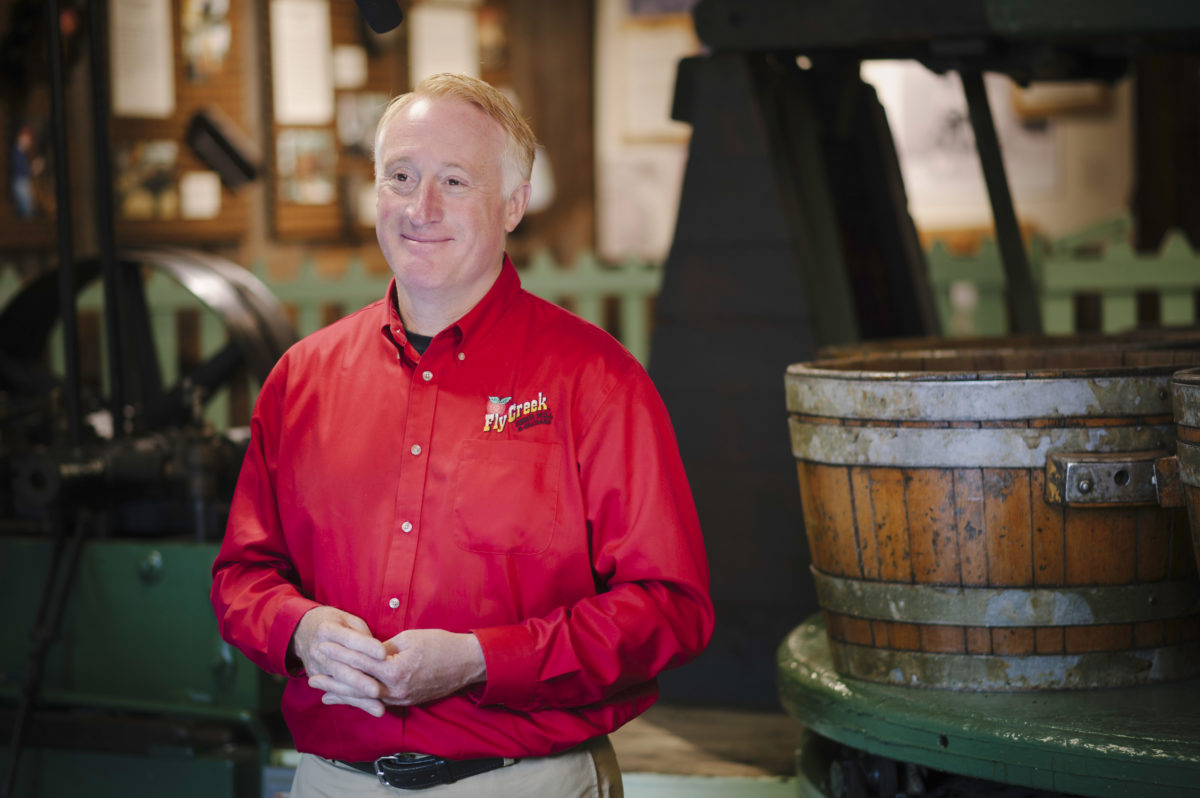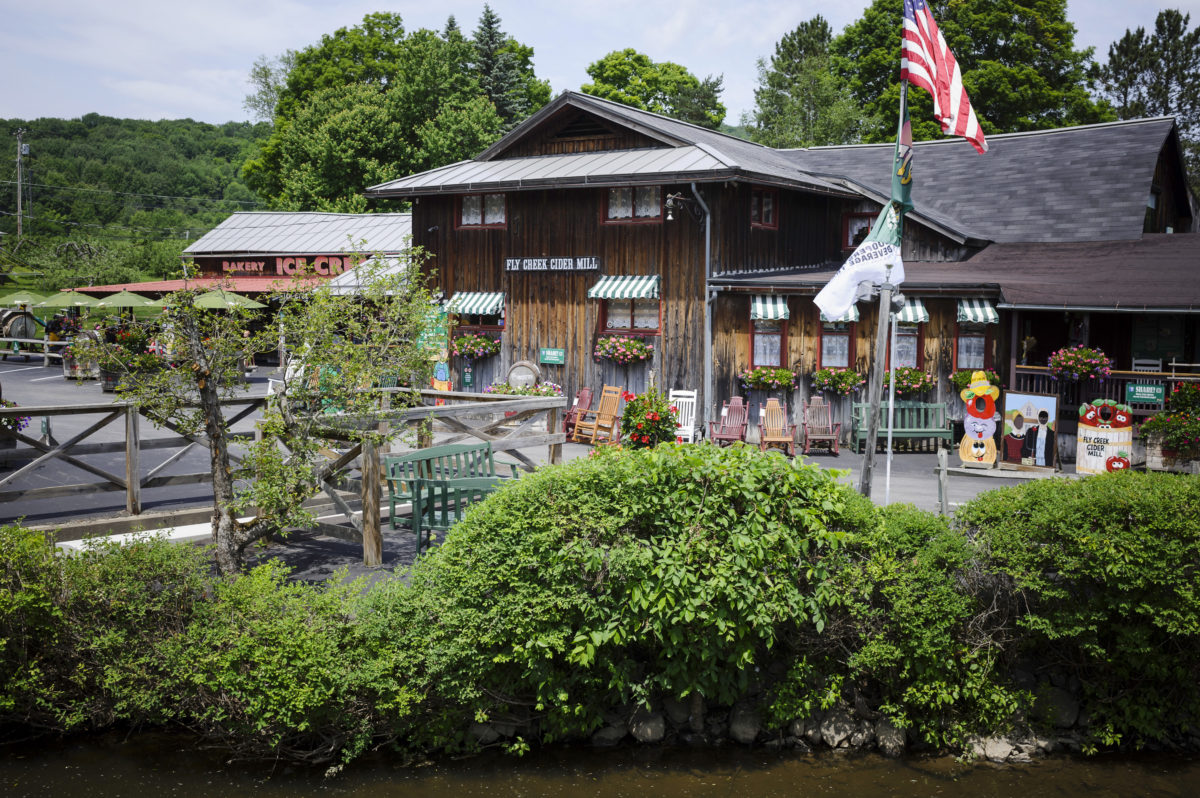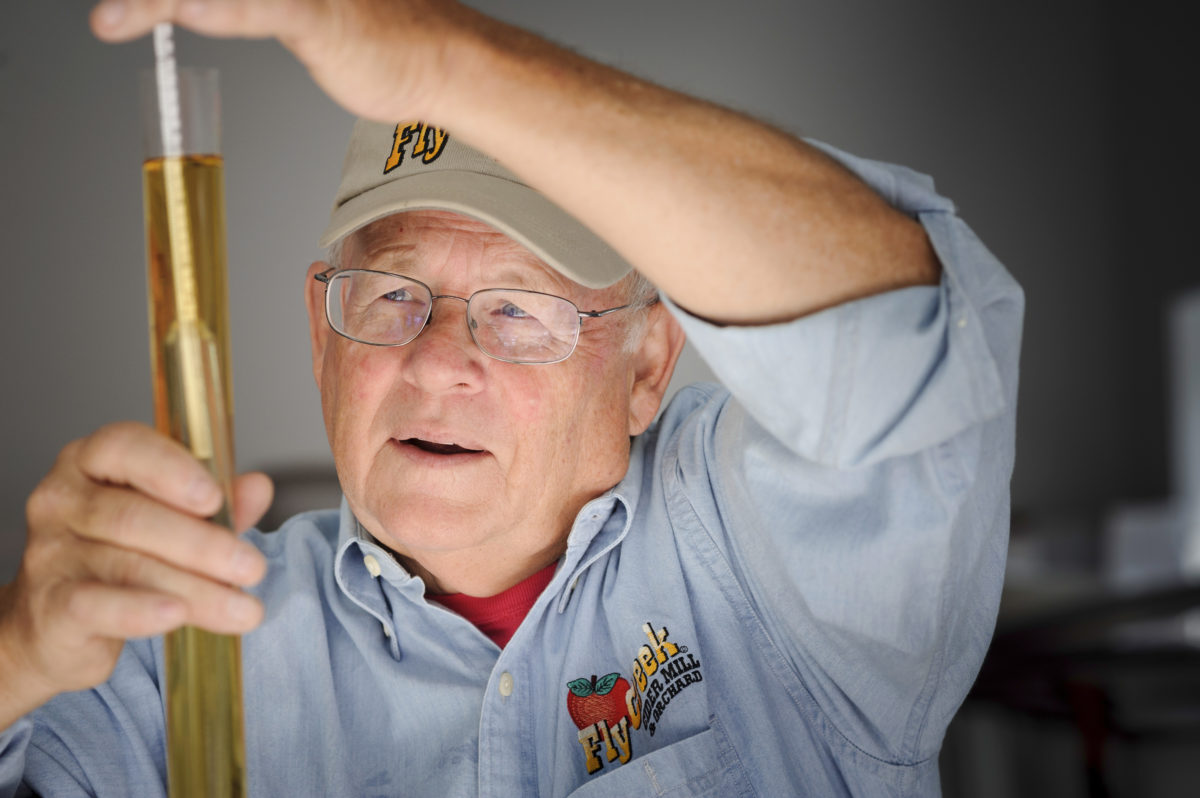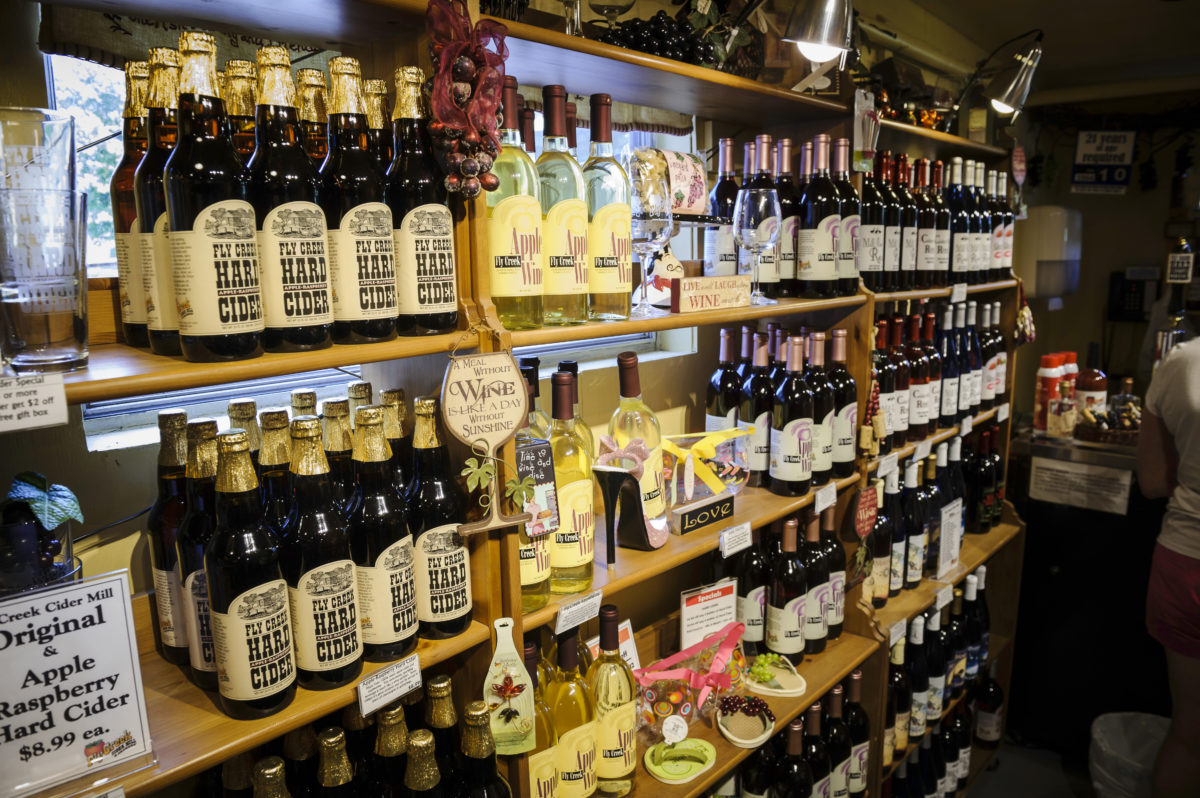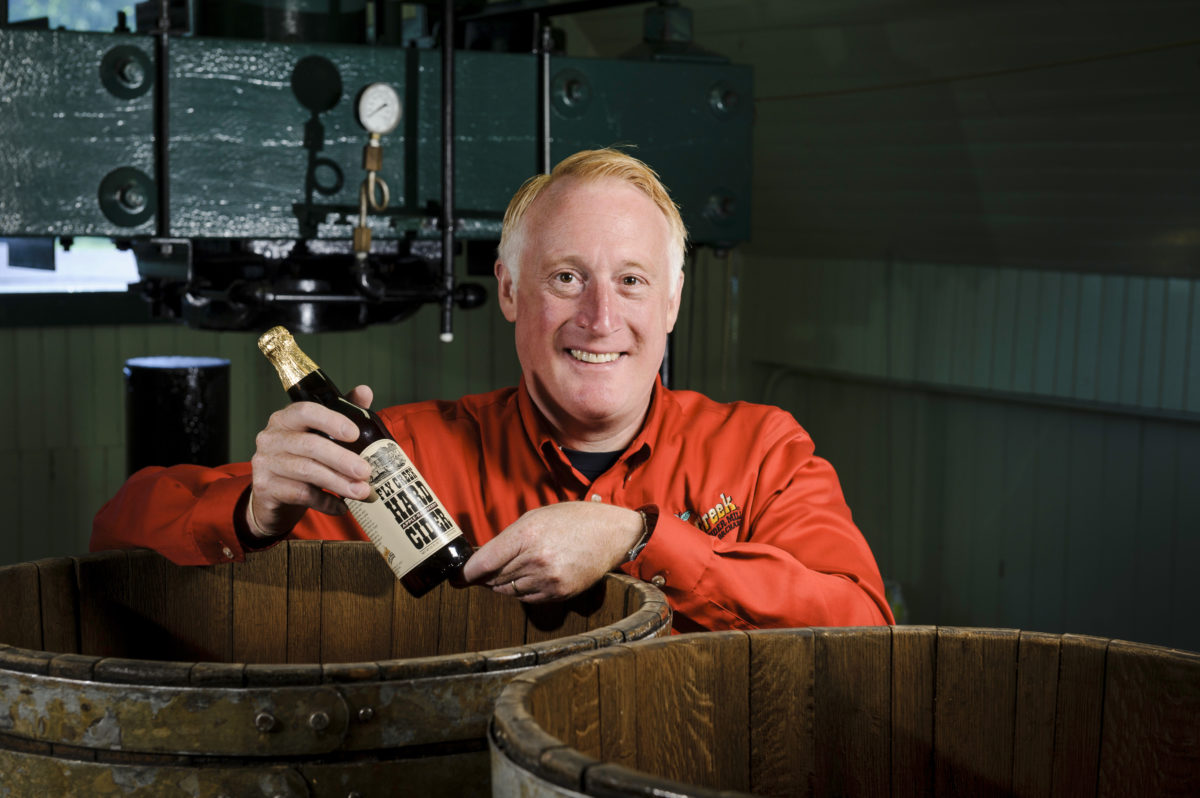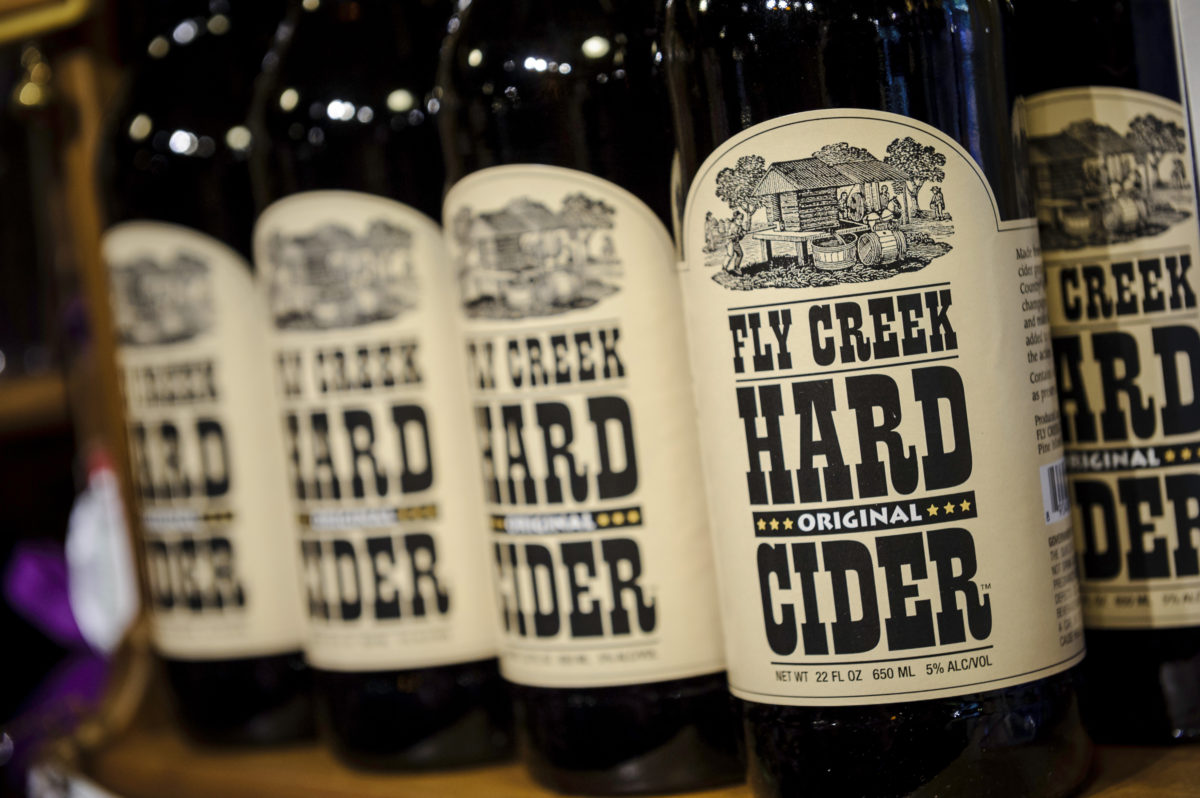The unique characteristics of Fly Creek Cider Mill & Orchard stretch well beyond the 125-year-old, water-powered apple press it uses today. In addition to its beginnings brewing hard ciders, the mill also fueled the growing local beer market through the second half of the 19th century.
The Fly Creek waterway inspired development of other brewing-related industries during Central New York’s legendary hop boom that peaked around the turn of the 20th century. Manufacturers made everything from the rakes and buckets used to harvest the hops to the stoves needed to dry them.
The last of eight of those to stand, Fly Creek Cider Mill & Orchard produces lines of hard cider and apple wines today in homage to its prestigious past as a brew producer and integral role in the Central New York hop movement.
Today’s mill boasts a full array of venues for visitors to taste, tour and explore. Enjoy a flight of hard ciders, wines, spirits and craft beers in the tasting room or something by the glass, paired with a delicious pot roast sandwich at the Snack Barn Restaurant. Tour the mill’s learning center and witness the cider-making process that uses a traditional water-powered, water-hydraulic press. Explore the mill’s attractions including the Millpond Boardwalk, gemstone mining, duck racing, Tractorland and vintage equipment displays. The mill is open seasonally from spring through December.
Bill: My dad was a carpenter, my mom was a high school art teacher, and they needed a home so they bought the whole facility for just the home up on the corner. The gentleman who sold them the mill still lived next door, so he would come over and get in my dad’s ear on how big the place used to be, and tell him about the big lines of people waiting to have their apples pressed. Well, that started my dad’s entrepreneurial bug and they started fixing it up. It just grew, slow, slow incremental growth, until eventually it became their full-time business. We’re a 32-inch press made in 1889 from the Boomer Mosher company in Syracuse, New York. It’s the traditional rack and cloth method. That means we lay your ground apples in cloths between plastic racks that used to be oak, but now they’re plastic. Our grinder is powered by a 1924 Waterloo Boy tractor engine. We’re almost completely off the grid when we’re making our product.
Making cider on the original equipment, showing people how things were done in the late 1800’s is what touches me in my heart. What we wanted to do with the farm winery license is reconnect with our roots, use our traditional equipment to make sweet cider and then ferment it. We really wanted to bring the process back, I guess you would say, to what it was historically, but with a new twist with our apple wines, our black currant apple wine. We have apple cherry, we have apple cranberry, also an apple and strawberry. It’s a realm of apple-based products that we can sell and serve here and expose customers to products that are new to them, but were common in the past.
Dave: We make the apple frost, and we make some experimental type small volume wines to see what direction we may want to go. The apple frost is what we spend most of our time on because that’s a very labor-intensive process. We start out with pressing the apples in the fall, and we through what’s referred to as a process of cryo-extraction. We freeze the juice, then thaw the juice, then freeze it, and thaw it for a couple months well into winter. It concentrates the flavors and the sugars. The yield on that is probably about 15 or 20%. It’s a very flavorful juice. It takes at least 6 months, if not closer to a year sometimes to be ready to bottle it.
Bill: We welcome about 150,000 visitors here annually. Coming in, they think of us as a historic attraction. Once they pass through the door, they actually see our other side which is a gourmet specialty foods, baked goods, dips, marinades. We offer more than 40 samples. They get a full flavor profile of all the products that we offer, and having a great family fun experience right in the heart of central New York.
